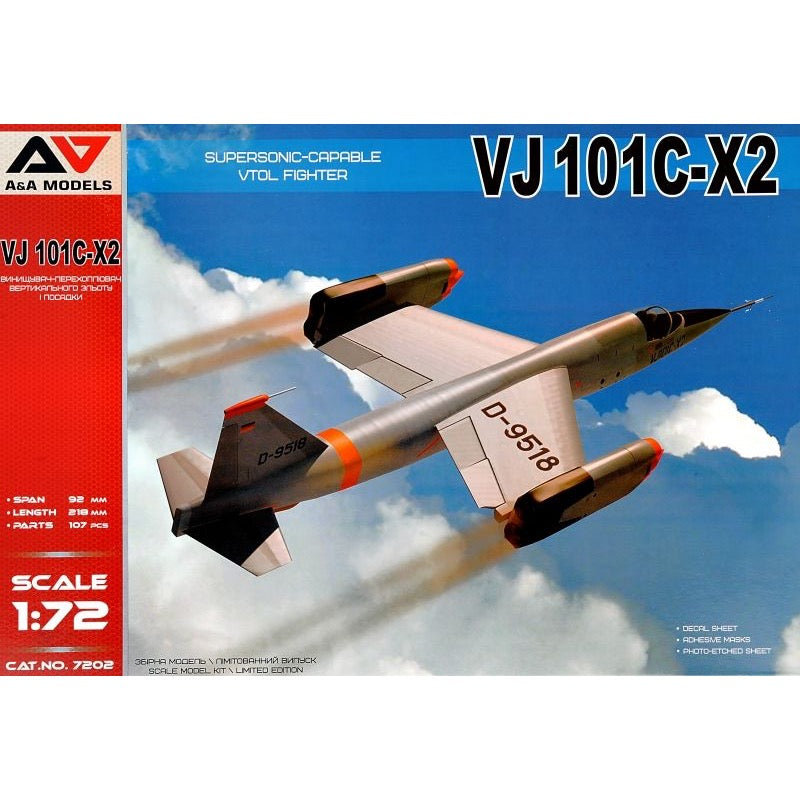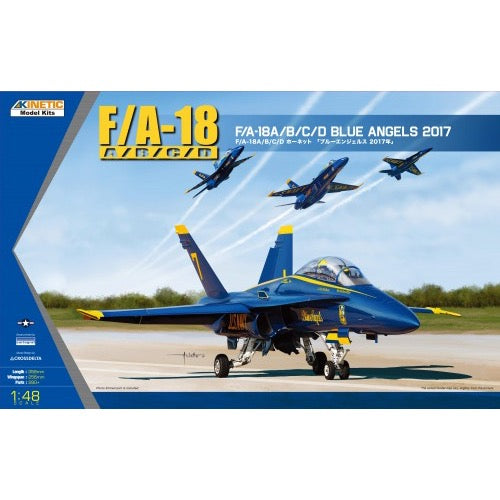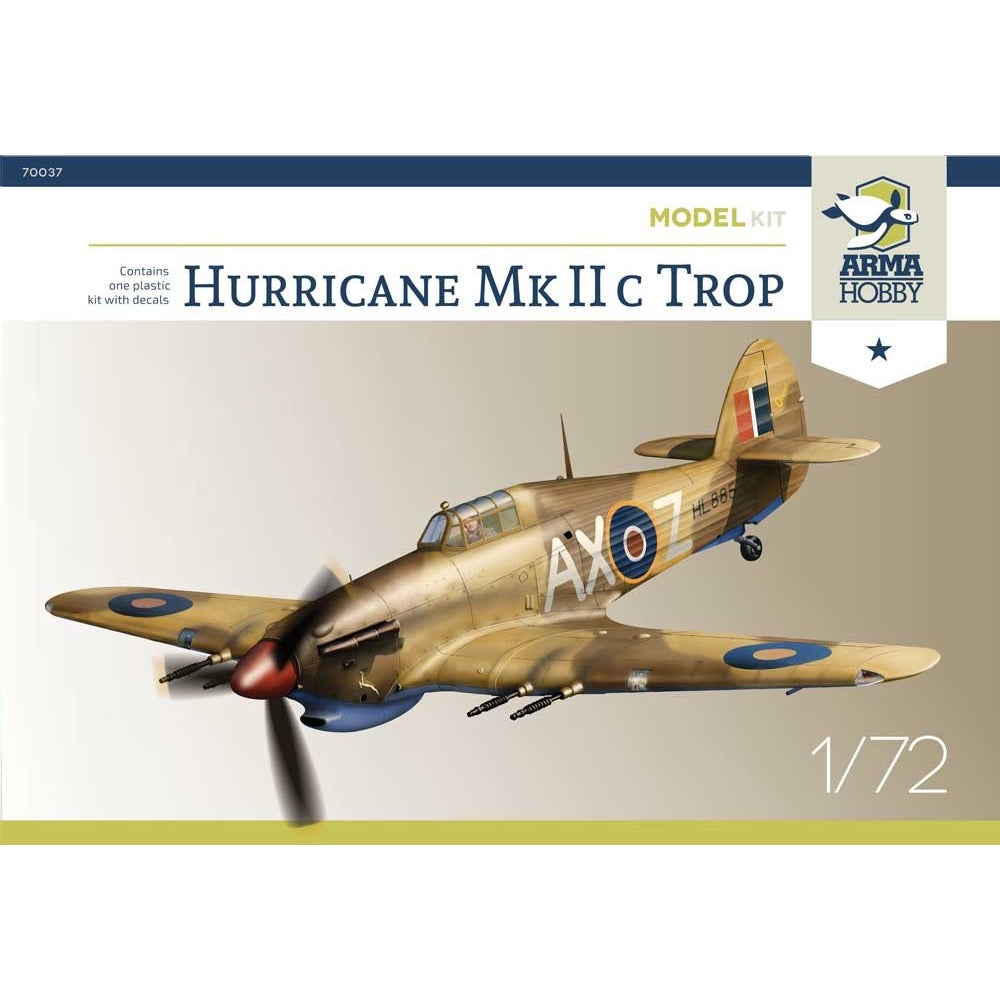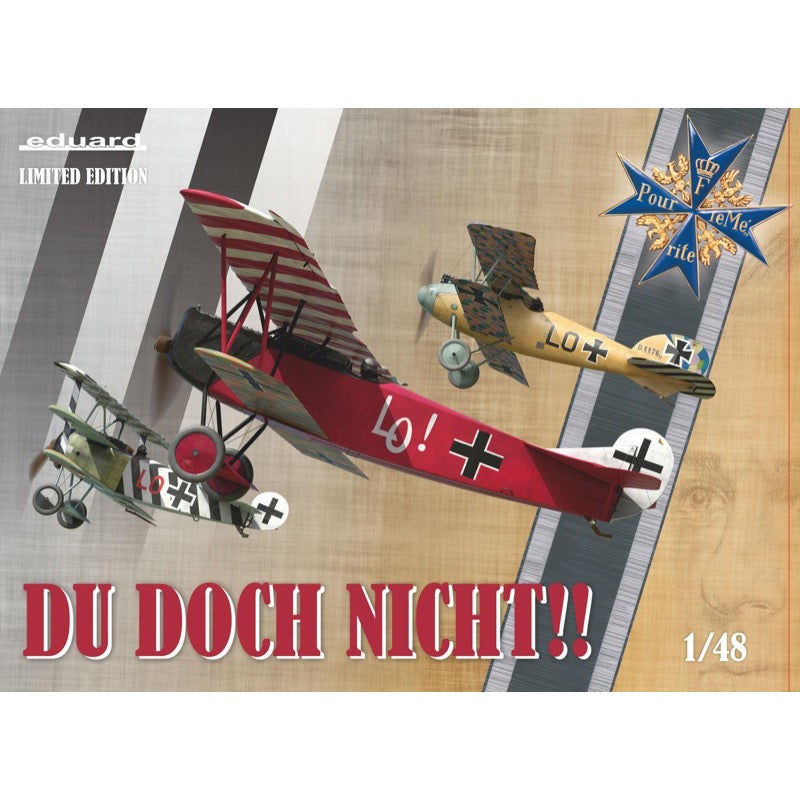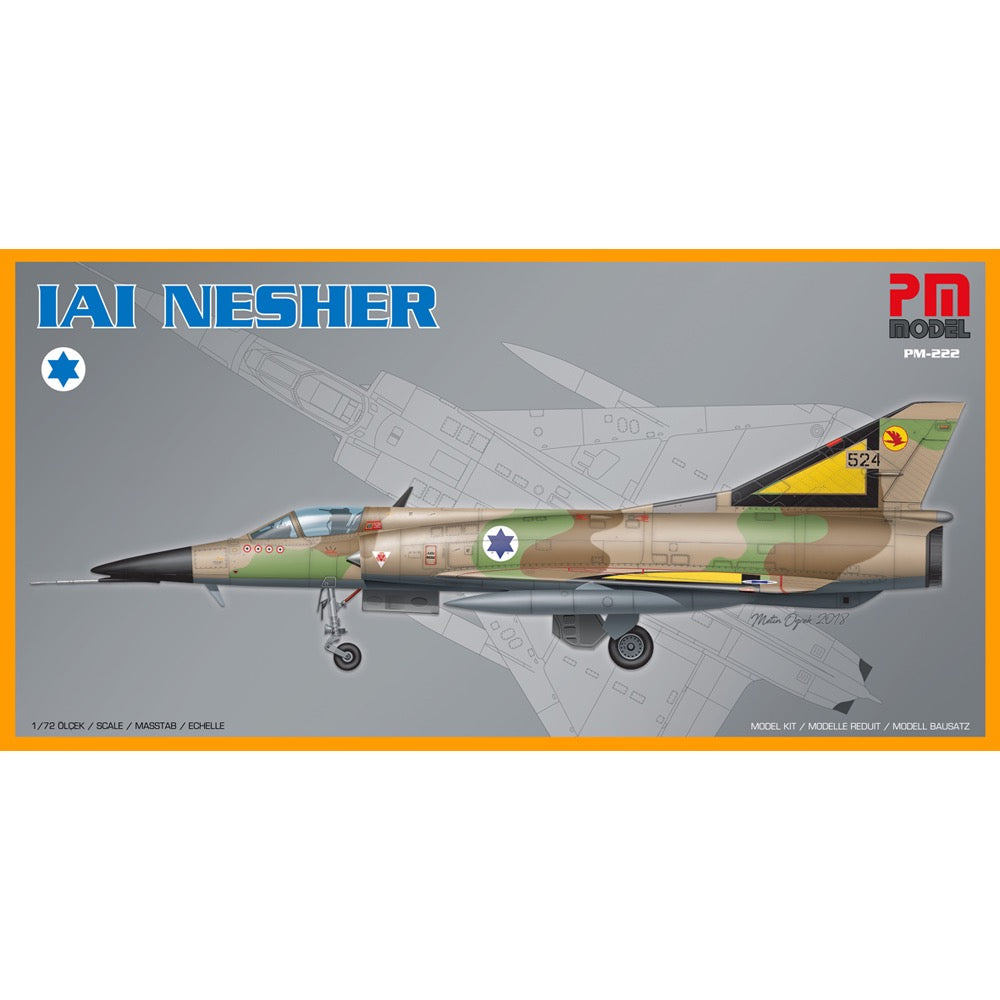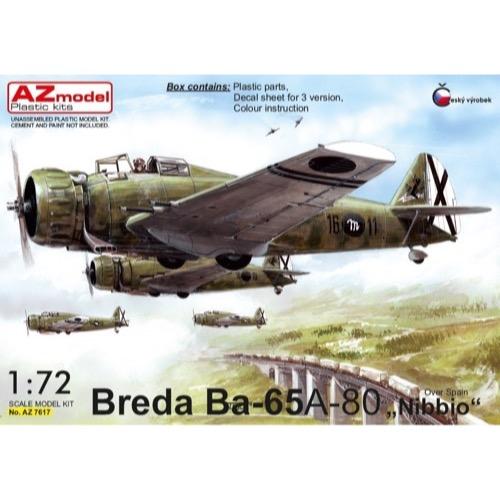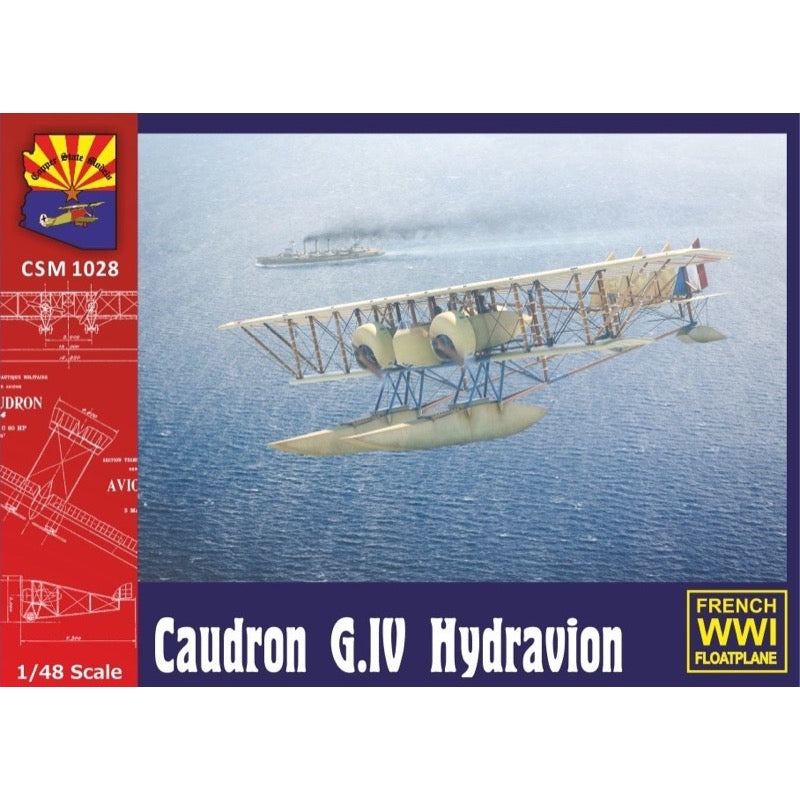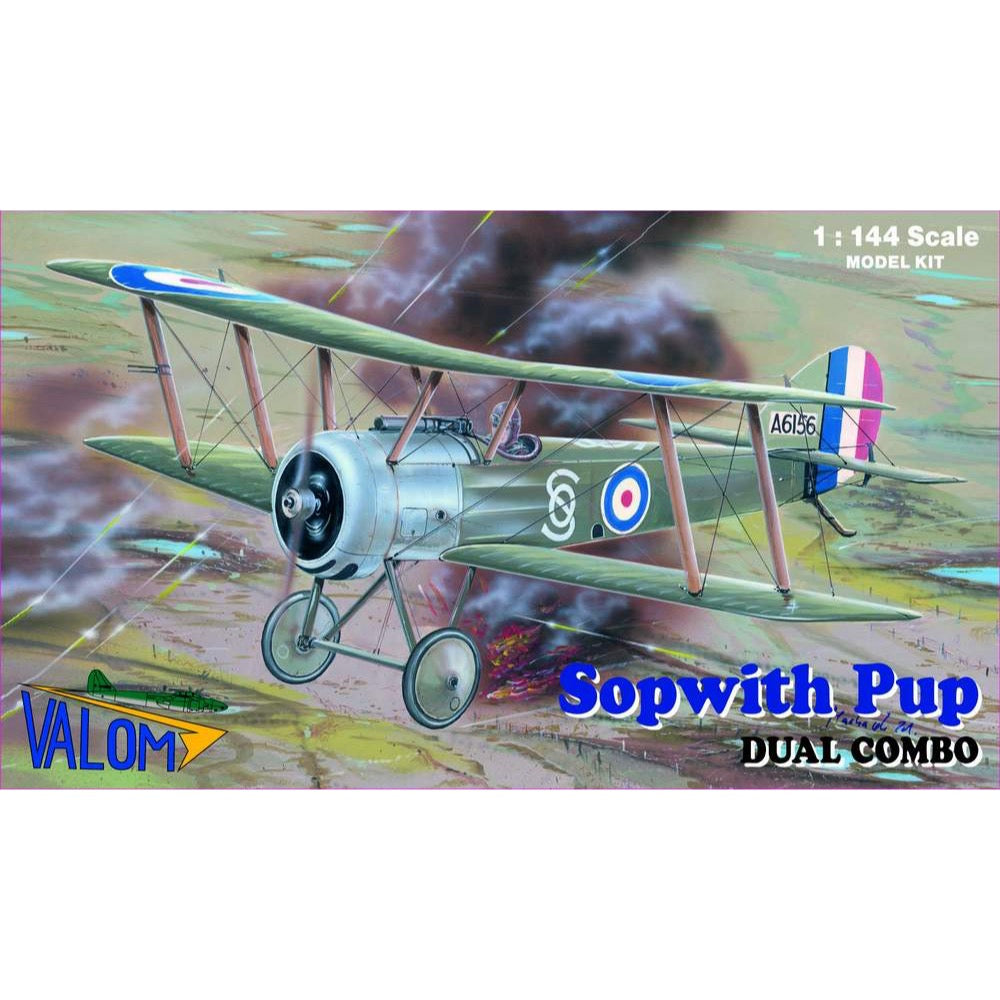
Valom 14402 1/144 Sopwith Pup (Dual Combo with 2 kits)
15.00
$
<p><strong>British fighter WWI</strong></p>
<p>The Sopwith Pup was a British single-seater biplane fighter aircraft built by the Sopwith Aviation Company. It entered service with the Royal Flying Corps and the Royal Naval Air Service in the autumn of 1916. With pleasant flying characteristics and good manoeuvrability, the aircraft proved very successful. The Pup was eventually outclassed by newer German fighters, but it was not completely replaced on the Western Front until the end of 1917. Remaining Pups were relegated to Home Defence and training units. The Pup's docile flying characteristics also made it ideal for use in aircraft carrier deck landing and takeoff experiments.</p>
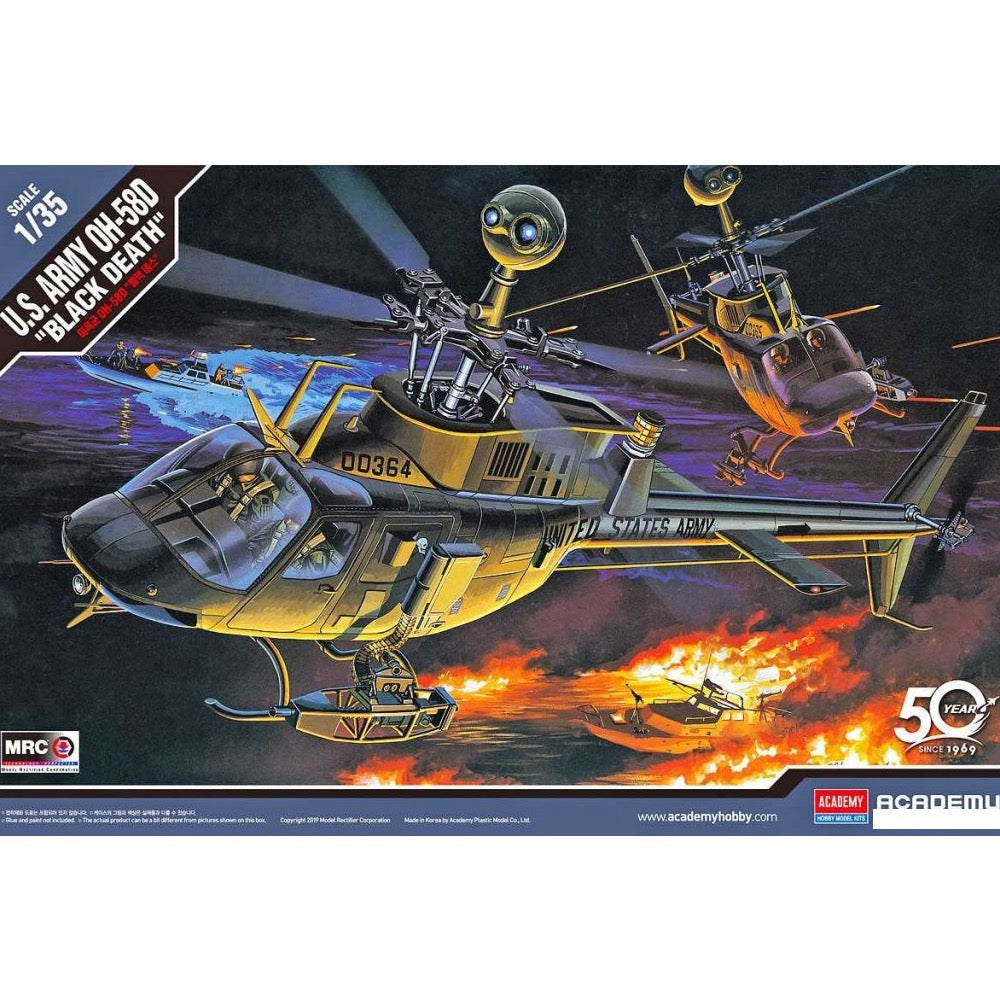
Academy 12131 1/35 OH-58D Kiowa "Black Death"
18.00
$
<p>The Bell OH-58 Kiowa is a light reconnaissance helicopter of American production from the Cold War and modern times, which is currently (2019) manufactured by Bell Helicopter Textron. The prototype's flight took place in 1962, and the machine entered service in 1969. The helicopter - in the OH-58A version - has a total length of 9.8 meters, and the diameter of its main rotor is 10.8 meters. The drive is provided by a single Allison T-63-A-700 engine with 317 HP. Its maximum speed in horizontal flight reaches approx. 225 km / h. The helicopter has a classic layout with a single main rotor and a propeller on the tail boom.</p>
<p>Work on the Bell OH-58 Kiowa machine began in the early 1960s, when the US Army reported a need for a new, light reconnaissance helicopter. However, the Bell factory lost the fight for this large government contract with Hughes. At the same time, the management of Bell Helicopters plants at that time decided to introduce minor changes to the machine and offer it on the civil market, which actually happened. At the same time, the Hughes plant ran into logistical and financial problems, which significantly slowed down the delivery rate of OH-6 helicopters to the US Army. This fact, exacerbated by the beginning of the Vietnam War, led to the fact that the Bell OH-58 Kiowa helicopter entered service in the American armed forces. Moreover, this machine (known as the Bell OH-58A Kiowa after a few changes) proved to be highly useful on the battlefield. In the course of serial production, several versions of this machine were created, including: OH-58A (the first mass-produced military version), OH-58B (version intended for Austria) or OH-58D Kiowa Warrior (version with extensive field observation systems). fighting in all weather conditions, both day and night). The Bell OH-58 helicopter gained some popularity and in various versions has been or is still operated by countries such as Saudi Arabia, Austria, Greece and Turkey.</p>
<p>This is an injection-plastic aircraft model kit.</p>
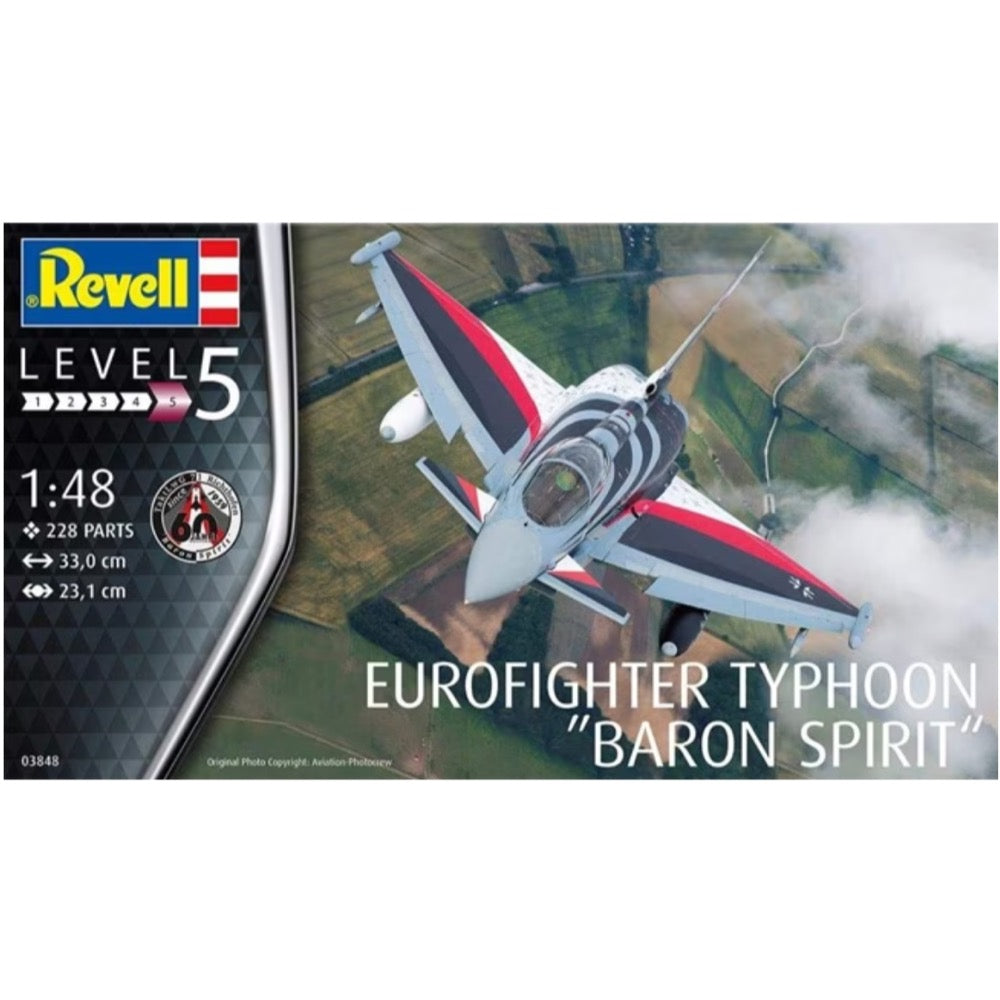
Revell 03848 1/48 Eurofighter Typhoon Baron Spirit
33.00
$
<p>The Tactical Air Force Wing 71 celebrated its 60th anniversary in 2019 with a special presentation of one of its Eurofighters. With its red elements, the design of the aircraft christened BARON SPIRIT quotes the namesake of the traditional squadron - the fighter pilot Manfred von Richthofen, also known as the Red Baron.</p>
<h3>Features</h3>
<ul>
<li>Large, colourful decal</li>
<li>Detailed cockpit</li>
<li>External loads</li>
<li>Award for the best design at the RIAT Show in Fairford, GB</li>
</ul>
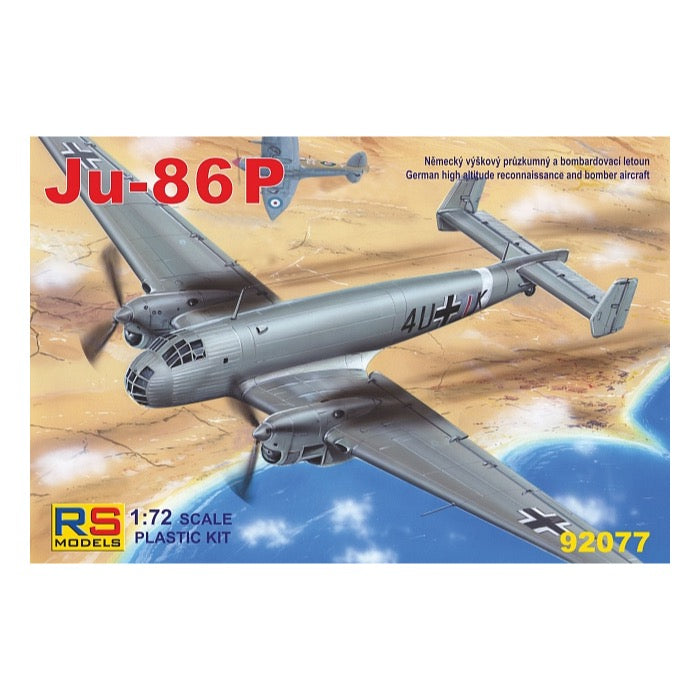
RS Models 92077 1/72 Junkers Ju-86P
31.00
$
<p>Junkers Ju 86 was a German bomber and transport aircraft, which originated in the early 1930s. The civilian version of the Ju 86B could carry 10 passengers; two aircraft were delivered to Swiss Swissair and ten Lufthans.</p>
<p>The bomber had a defensive armament of three MG 15 machine guns and could carry a load of 1,000 kg bombs. The early Ju 86D-1 (1936) was powered by two Jumo 205C-4 diesels of 600 hp; the Ju 86E had star-powered BMW 132F engines. Several machines were delivered to Sweden, South Africa, Manchuria, etc. Ju 86K was an export version that was also built in Sweden with Bristol Mercury XIX 905 hp engines and remained in service in the Swedish Air Force until 1956. The bombers were also tested in Spain , where they proved to be worse than Heinkel He 111 aircraft and were soon eliminated after the Polish invasion.</p>
<p>In January 1940, the Luftwaffe tested the prototype Ju 86P with a larger span, pressurized cabin, turbocharged Jumo 207A1 and two-man crew. This version had a ceiling of up to 12 km, which provided it with security from enemy fighters. Luftwaffe, satisfied with the newer version, ordered 40 older versions of the bomber, which were rebuilt to the height type Ju 86P-1 and fotoprůzkumnou version of P-2. These aircraft have served for several years successfully over Britain, the USSR and North Africa. In August 1942, one such aircraft was shot down by a high-altitude version of the Spitfire V over Egypt. Ju 86P aircraft then served until 1943. The Luftwaffe also developed the Ju 86R with an even larger span and newer engines, this aircraft then reached heights of up to 16 km, but production was limited to prototypes.</p>
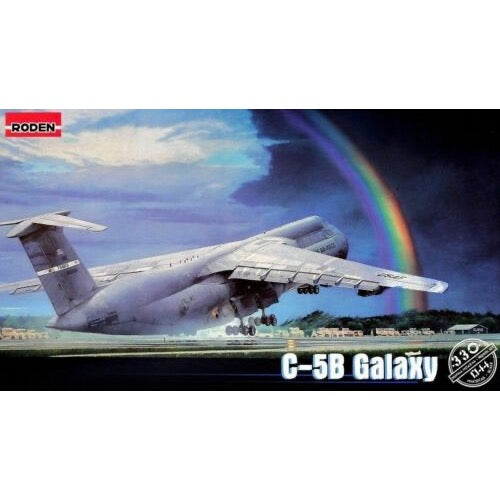
Roden 330 1/144 Lockheed C-5B Galaxy
71.00
$
<p>In the mid-1960s transport aircraft began to play a more significant role in the new types of military conflict that erupted one after another and faded away in various parts of the world. The invisible confrontation between the two major superpowers, the USA and the USSR, involved occasional but very frequent intervention by one or the other (and in most cases - both) country, a circumstance which would quickly draw in a significant number of soldiers and different kinds of military equipment including heavy machinery. Under these conditions, the demand for new types of military transport aircraft grew as fast as the appetites of the military, who wanted to expand their presence in almost every 'hot spot' on the planet. At that time, the US Air Force transport fleet was quite varied - from well-proven and still capable veterans like the C-130 Hercules and the C-133 Cargomaster, to the relatively new C-141 Starlifter. However, they could not fully satisfy all the requirements of the military for the rapid transfer of a large number of troops and armored vehicles in a short period of time. The appearance of the Soviet An-22 'Antei' ('Cock' in NATO classification) was a real shock for the West - suddenly it turned out that the Soviet Union had an aircraft capable of carrying 60 tons of cargo, more than any US Air Force aircraft. In 1964, the US Air Force Command issued requests to manufacturers for a new super-heavy jet aircraft, which could lift a payload of 100 tons.</p>
<p>The Lockheed company, which had a vast experience in building large transport planes, was one of the first to respond, offering the concept of an aircraft with a hinged nose, which would greatly facilitate the loading of heavy equipment into the cargo compartment. In the middle of 1965 Lockheed was recognized as the winner and given an order for the manufacture of 58 aircraft with an option for 57 more. On March 2, 1968 the first aircraft, officially named the C-5A Galaxy, was presented to the public and honored guests, among whom was President Johnson. Testing the giant new machine lasted until the middle of 1969 under an accelerated program, and Lockheed was already fully prepared for series production, but suddenly the justification for the C-5A was questioned in the country's Congress. The cost of one aircraft exceeded 60 million dollars, as against 40 previously announced - and both sums in those days were more than startling. But ultimately a compromise was found - instead of 115 C-5As, which might have been built from the total project funds allocated, the contract was reduced to 81 aircraft. Construction of this series lasted until mid-1973 and the various contractors fully complied with the order.</p>
<p>Another factor that weighed the scales in favor of the expediency of the C-5, was the military conflict in Vietnam. The US forwarded an incredible amount of weaponry, and some of the equipment, such as heavy helicopters or heavy howitzers could only be carried by the C-5A at that time. With the end of the Vietnam War the fate of the C-5 was questioned again - the US press were highly critical of the Pentagon's bloated budget, and the C-5 in particular as an example of "inefficient waste of taxpayers' money"; but a single event completely changed the debate again in favor of the C-5. In October 1973 the Judgment Day/Yom Kippur War began and the fate of Israel hung in the balance - the main US ally in the Middle East was one step away from complete disaster. In those difficult days, with the help of the C-5A, a huge amount of military equipment, including aircraft, helicopters, heavy self propelled artillery systems and much more military equipment was transferred to Israel. Over 33 days and 145 flights, the C-5 transported a total weight of nearly 9,000 tonnes of material, which was a crucial factor in the victory of Israel over numerous Arab adversaries, who were supplied in the same way by the USSR with its cargo transport aviation. Later, in a grateful speech to the US the prime minister of Israel Golda Meir paid particular tribute to the "miracle, which the people of Israel will retell to future generations, miracle rescue from inevitable defeat, and this miracle is named 'C-5 Galaxy' ".</p>
<p>This episode seemed to be a culmination in the history of the largest aircraft of its time, but the C-5 was just getting started. In 1980, the United States was led by Ronald Reagan, a politician who decided to radically change the role of his country in the world order. One of his priorities was to significantly increase defense spending to support the US presence in all parts of the world where the political situation demanded it. Of course, the question of building additional numbers of new cargo aircraft for these requirements was more than relevant. Lockheed had mysteriously managed to keep in being all the construction equipment for the giants, and thus reviving their production did not require significant expenditure of money or time. In the summer of 1985 the first newly-built aircraft, designated the C-5B, solemnly rolled out from the same plant in Marietta, where 17 years earlier its story had begun. It should be mentioned that the change in designation was not the only change in the new production batch. In contrast to its predecessor the C-5B received an upgrade in wing construction, new avionics, and an improved loading system in the fuselage. Although, adjusted for inflation, its unit price was not 60, but a hefty 120 million dollars, questions about the appropriateness of its construction were not even raised in the US Congress. All the 50 Lockheed C-5Bs ordered were completed by spring 1989, but the Pentagon decided an additional batch of C-5Bs would be misplaced. New, more modern types of cargo aircraft appeared, and although they did not have the huge capacity of the C-5, in a changing world geopolitical situation the total number of super heavy machines already built was more than enough. Apart from the Vietnam War and Yom Kippur the C-5's military career features many more major historical events of the late 20th and early 21st centuries; they took part in the first Iraq War (Operation Desert Storm), and in the second (Operation Iraqi Freedom). After the terrorist attacks of 2001, in the course of Operation Enduring Freedom against the Afghan Taliban, the C-5 conducted more than 4,000 missions to the country, transporting more than 210,000 tons of cargo.</p>
<p>In addition, the C-5 repeatedly carried out missions of a humanitarian nature to areas suffering from large scale natural disasters, or dual purpose missions, as say, in 1994 in the post-Soviet countries, where according to political agreements they transported to safety the entire stock of unenriched armed uranium, averting the risk of this dangerous substance passing into the hands of global terrorism. In the late 1990s, almost all the C-5Bs were temporarily pulled out of service to upgrade their outdated avionics. It was also decided to replace its engines with more modern ones, and the new version was designated the C-5M. By then, the Galaxy had no longer been the largest aircraft in the world for a long time, since the appearance of the Soviet AN-124 and AN-225; but to this day the C-5 remains the greatest of all American military transport aircraft as it has been for nearly 50 years.</p>


